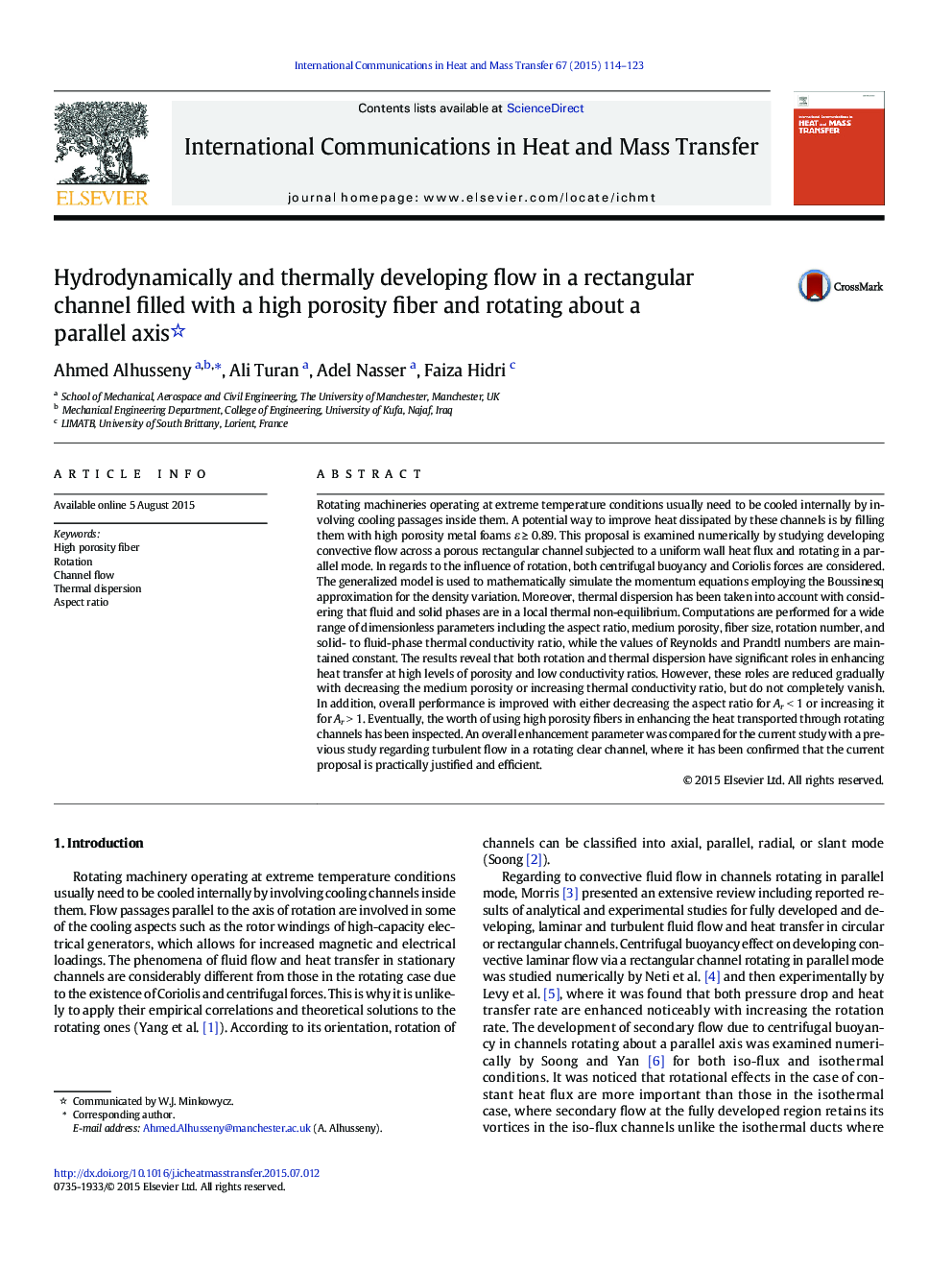| Article ID | Journal | Published Year | Pages | File Type |
|---|---|---|---|---|
| 653079 | International Communications in Heat and Mass Transfer | 2015 | 10 Pages |
Abstract
Rotating machineries operating at extreme temperature conditions usually need to be cooled internally by involving cooling passages inside them. A potential way to improve heat dissipated by these channels is by filling them with high porosity metal foams ε â¥Â 0.89. This proposal is examined numerically by studying developing convective flow across a porous rectangular channel subjected to a uniform wall heat flux and rotating in a parallel mode. In regards to the influence of rotation, both centrifugal buoyancy and Coriolis forces are considered. The generalized model is used to mathematically simulate the momentum equations employing the Boussinesq approximation for the density variation. Moreover, thermal dispersion has been taken into account with considering that fluid and solid phases are in a local thermal non-equilibrium. Computations are performed for a wide range of dimensionless parameters including the aspect ratio, medium porosity, fiber size, rotation number, and solid- to fluid-phase thermal conductivity ratio, while the values of Reynolds and Prandtl numbers are maintained constant. The results reveal that both rotation and thermal dispersion have significant roles in enhancing heat transfer at high levels of porosity and low conductivity ratios. However, these roles are reduced gradually with decreasing the medium porosity or increasing thermal conductivity ratio, but do not completely vanish. In addition, overall performance is improved with either decreasing the aspect ratio for Ar < 1 or increasing it for Ar > 1. Eventually, the worth of using high porosity fibers in enhancing the heat transported through rotating channels has been inspected. An overall enhancement parameter was compared for the current study with a previous study regarding turbulent flow in a rotating clear channel, where it has been confirmed that the current proposal is practically justified and efficient.
Related Topics
Physical Sciences and Engineering
Chemical Engineering
Fluid Flow and Transfer Processes
Authors
Ahmed Alhusseny, Ali Turan, Adel Nasser, Faiza Hidri,
